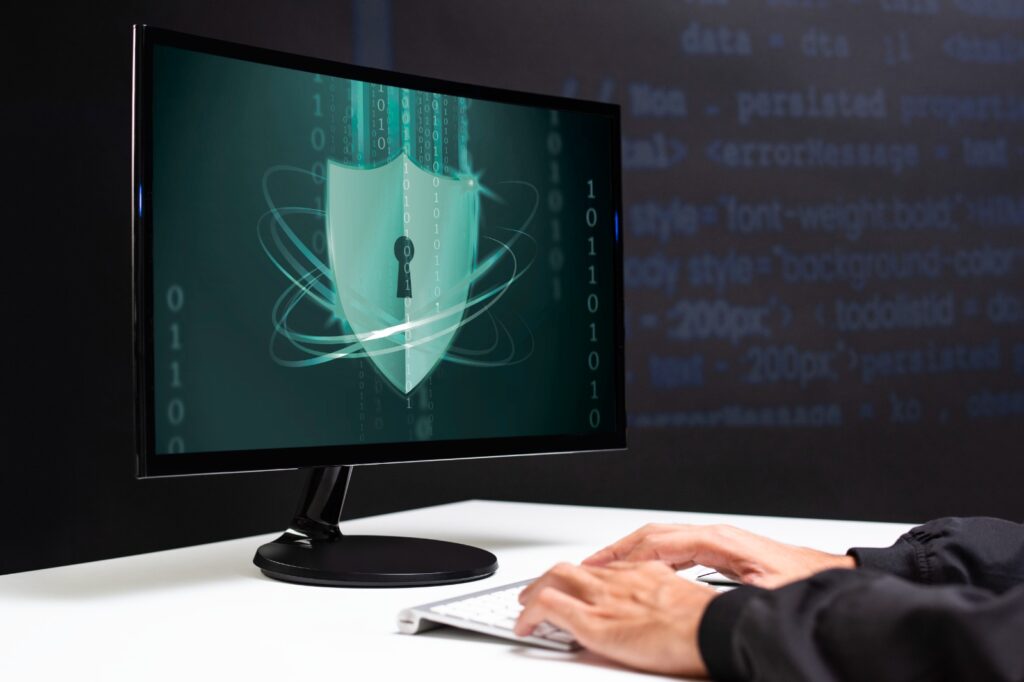The digital environment is changing, but why? The world is undergoing a digital transformation with the daily updates of new technologies. As a result, there is a need to safeguard against the misuse of these technologies, as some individuals and companies exploit these platforms for their own gain. This raises important questions about how emerging technologies affect cybersecurity.
How Technology Affects Cybersecurity

As I mentioned, technology is evolving, and so are security measures. So, how do emerging technologies impact cybersecurity?
Positive impact
- Better detection and protection,
- Improved Threat Intelligence,
- Automated Security Measures.
Advanced artificial intelligence models and machine learning systems can now analyse a huge amount of data at once, helping with faster detection and threat prevention.
Negative impact
- Increased Attack Surface,
- Advanced cyber threats,
- Dependency on Technology.
While there are many positive aspects, this huge growth in technology will also affect cybersecurity. As new technologies emerge, cyber attackers will find new ways to launch attacks. This constant evolution of threats requires continuous updates to security measures.
What are the impacts of emerging technology?
Let’s explore some key impacts of how emerging technologies affect cybersecurity.
Increased attack surface
As new technology advances, it paves the way for new methods for attackers. This expanded attack surface includes,
- IoT devices,
- Cloud services,
- Mobile applications,
- AI-powered systems.
Enhanced threat protection
Developed technologies have improved the way we detect threats.
- AI and machine learning algorithms can identify patterns,
- Behavioral analytics help spot unusual user activities,
- Automated threat intelligence gathering and analysis.
Evolving threat landscape
Cybercriminals are using new technologies to create more advanced attack methods.
- AI-based attacks,
- Deepfakes,
- IoT attacks,
- Breaking quantum-resistant encryption.
Privacy concerns
While new technologies enhance security, they also raise privacy issues,
- Biometric data collection and storage risks,
- AI-driven monitoring capabilities,
- Data aggregation and analysis leading to potential misuse.
Skill Gap and Workforce Challenges

The fast development of technological change has created a cybersecurity skills shortage,
- Demand for professionals with expertise in emerging technologies,
- Need for continuous learning and upskilling,
- Difficulty in finding qualified personnel for specialised roles.
Artificial Intelligence and Machine Learning in Cybersecurity
With developments in the technical field, organisations are changing their approach to technology by incorporating more security measures, including AI and machine learning. So how emerging technologies affect cybersecurity making use of them?
Improved threat detection capabilities
AI and machine learning help analyse vast data to identify patterns and highlight potential security risks. This improves threat detection by,
- Real-time monitoring – AI systems can continuously analyse traffic and user behavior, identifying suspicious activities.
- Accurate data detection – Machine learning is capable of producing the most accurate threat detection, helping out with no false detections.
- Adaptive learning – With new technologies, the system is always updated by the detecting machines.
- Automation – Automation helps to simplify content and reduce human errors.
Challenges and limitations of AI in cybersecurity
While discussing how emerging technologies affect cybersecurity, it’s important to address the challenges as well.
- The AI system requires high-quality data and a variety of data for training.
- Adversarial attacks occur when hackers manipulate AI systems.
- Complex AI decisions can be hard to understand.
- Ethical concerns happen because AI surveillance can affect privacy.
Predictive analytics for proactive security measures
AI and machine learning are helping organisations shift from reactive to proactive security, showcasing how emerging technologies affect cybersecurity.
- Vulnerability prediction – Identifying the weak parts of the system before they are ruined.
- User behaviour analysis: – Identifying unusual activities in the records.
- Threat detection – Identifying potential threats from the recorded data sets.
Internet of Things (IoT) and Its Security Implications
The Internet of Things (IoT) is the collection of data that helps exchange information between devices, promoting effective communication. And this is a very important factor to consider when discussing how emerging technologies affect cybersecurity. Let’s explore some factors in this.
- Balancing security and functionality in IoT devices – The important thing to consider about IoT is the balance between security and functionality. While functionalities provide valuable data, inadequate security can lead to consumer distrust. More connected devices increase vulnerability exposure, and collecting large amounts of data requires strong security measures. The best measure is to follow the IoT-specific protocols and standards.
- Securing IoT networks and data transmission – Protecting large amounts of data is important, as each connected device represents a potential threat, expanding the attack surface.
Blockchain Technology for Enhanced Cybersecurity

Blockchain technology increases transparency and provides various protections for sensitive data and transactions. So How emerging technologies affect cybersecurity in the case of blockchain technology?
It helps provide theoretically unhackable communication channels, detects any eavesdropping attempts, and as a measure to protect future threats from quantum computing, researchers are also working on quantum-resistant cryptographic algorithms.
Cloud computing and security challenges
Cloud computing is also securing its data while introducing new security challenges. So, let’s see how emerging technologies affect cybersecurity through secured cloud security.
- Using secured cloud environments with the practice of enhanced tools like Cloud Access Security Brokers (CASBs), Security Information and Event Management (SIEM) solutions, Identity and Access Management (IAM) tools, Encryption, and key management services.
- Protecting data and privacy in the cloud through end-to-end encryption, data loss prevention (DLP) tools, backup, and test data recovery processes.
5G Networks and Cybersecurity
Now let’s see how the 5G network brings exciting opportunities and significant challenges to the world of digital security.
- Protect the critical infrastructure from vulnerabilities through robust encryption protocols, regularly updating the patch system, and developing incident response plans specific to 5G-related threats.
- By bringing data processing close to the source through edge computing.
- Enabling security features of the 5G network.
The more connectivity there is, the more vulnerabilities there are.
While 5G offers more connectivity, it also expands the attack surface. Including,
- IoT device exploitation,
- Increased DDoS attack potential,
- Privacy concerns due to location tracking capabilities,
- Supply chain risks in 5G infrastructure.
Biometric Authentication and Identity Management
Biometrics is a powerful security measure in this technological era, providing more privacy. Let’s see some of the future aspects of cybersecurity in the biometrical field.
Biometric Spoofing
Biometric authentication systems are not immune to attacks. Cybercriminals have developed sophisticated methods to spoof biometric data, such as using high-quality photos or 3D-printed masks to bypass facial recognition systems. For this do liveness detection, multi-modal biometric systems, and artificial intelligence-based anomaly detection.
Privacy concerns and data protection
Even though the system is protected the storage and handling of biometric data require careful consideration and unique protection measures.
Multi-factor Authentication with Biometrics
Combining biometrics with other authentication factors creates a secure system. This mostly involves,
- Something you know (password),
- Something you have (security token),
- Something you are (biometric).
As we move forward, biometric technology will be integrated with other advanced options for protection and security to maintain privacy.
Technologies will continue to develop, and security systems must be protected. The only way to do this is by staying updated. It’s not possible to go backward with technology, so keep up while prioritising security. So I think you got an idea of how emerging technologies affect cybersecurity. The future of cybersecurity is in our ability to hold the power of emerging technologies while considering their potential risks.
